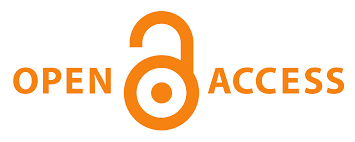Indonesian-English Code-Switching in Contemporary Contexts: Insights from 2023–2024 Data
Main Article Content
Sofyan Sukwara Akfan
Code-switching, prevalent in multilingual contexts, exemplifies linguistic adaptability and social conformity. This study employed a qualitative research design utilizing content analysis methods, involving randomly selected participants and unstructured interviews to investigate Indonesian-English code-switching on social media platforms, particularly Facebook. The data underwent evaluation in three phases: reduction, display, and conclusion formulation. The results identified three main types of code-switching: intra-sentential (50%), inter-sentential (30%), and tag-switching (20%). Intra-sentential switching was the predominant form of code-switching, indicating a high degree of integration between the two languages in informal online conversation. Individuals swap codes for various reasons: to display their status or "cool" persona (60%), to showcase their educational background (24%), and to attract attention (16%). Code-switching functions both as communication and a marker of identity, with English often symbolizing prestige among youth. It supports adaptability, problem-solving, and inclusivity in education but, when excessive especially intra-sentential may reduce long-term proficiency. Overall, it reflects globalization’s influence on language and identity in multilingual cultures.
Adilazuarda, M. F., Cahyawijaya, S., Winata, G. I., Fung, P., & Purwarianti, A. (2023). IndoRobusta: Towards robustness against diverse code-mixed Indonesian local languages. arXiv preprint. https://arxiv.org/abs/2311.12405.
Almelhi, A. M. (2020). Understanding code-switching from a sociolinguistic perspective: A meta-analysis. International Journal of Language and Linguistics, 8(1), 34–45. https://doi.org/10.11648/j.ijll.20200801.15
Androutsopoulos, J. (2015). Networked multilingualism: Some language practices on Facebook and their implications. International Journal of Bilingualism, 19(2), 185–205. https://doi.org/10.1177/1367006913489198
Auerbach, Carl F. & Silverstein, Louise, B. (2003). Qualitative Data: An Introduction to Coding and Analysis. New York and London.
Dewi, F. (2021). Code-switching functions in Indonesian social media contexts. Journal of Digital Communication, 4(2), 112–125. https://doi.org/10.22146/jdc.2021.4.2.112
Fathimah, D. N. (2022). Why is there code switching in EFL classroom? : A case study in a vocational school in Cimahi, West-Java. Jurnal Pendidikan Bahasa dan Sastra. https://ejournal.upi.edu/index.php/BS_JPBSP/article/view/3063
Fauziati, E., Widiastuti, H., & Darussalam, H. M. (2020). Code switching as interlanguage communication strategy by Indonesian EFL learners. Ranah: Jurnal Kajian Bahasa, 9(2). https://doi.org/10.26499/rnh.v9i2.2950
Grosjean, F. (2022). Bilingual cognition: New directions in code-switching studies. Cognitive Linguistics, 33(3), 457–483. https://doi.org/10.1515/cog-2022-0032
Halim, N. S., & Maros, M. (2014). The functions of code-switching in Facebook interactions. Procedia - Social and Behavioral Sciences, 118, 126–133. https://doi.org/10.1016/j.sbspro.2014.02.017.
Hanafiah. (2024). Code-switching of Indonesian-English among the elites in Makassar City. Journal of Indonesian Sociolinguistic and Humanities, 3(1), 13–26. https://journal.unhas.ac.id/index.php/jish/article/view/23155
Heriyanto, H. (2018). Thematic analysis as a method of analyzing data for qualitative research. Anuva, 2(3), 317–324. https://doi.org/10.14710/anuva.2.3.317-324
Husni, H., & Arianto, M. A. (2023). Code switching used by Indonesian EFL teachers in upper secondary school. Journal of English Language Teaching, 12(2). https://doi.org/10.24036/jelt.v12i2.122824
Kvale, S. (1996). Interviews: An Introduction to Qualitative Research Interviewing. United State of America. SAGE Publication Ltd.
Maharani, S. P. (2022). An Analysis Of Indonesian–English Code-Mixing Used by Indonesian Public Figures in Twitter:(A Sociolinguistic Study). Repository FIB UNSAP, 1(1). http://repository.unsap.ac.id/index.php/fibunsap/article/view/202
Manuhutu, A. R., Manuhutu, G. S., & Manuhutu, C. A. (2022). An analysis of Indonesian-English code switching used in social media. Scientific Journal of Language and Literature, 3(2), 95–104. https://ojs.balidwipa.ac.id/index.php/sfjlg/article/view/291
Marwa, M. (2014). Reasons for Students’ Code-Switching Between Informal Indonesian and English in ELT Contexts. ELT-Lectura Studies and Perspective in English Language Teaching, 1(1), 20-27. https://repository.unilak.ac.id/2736/
Matras, Y. (2019). Multilingualism and the dynamics of code-switching. Cambridge University Press.
Nguyen, L., Yuan, Z., & Seed, G. (2022). Building educational technologies for code-switching: Current practices, difficulties and future directions. Languages, 7(3), 220. https://doi.org/10.3390/languages7030220
Perdana, O. (2015). The analysis of code switching on Facebook comments. Humanis, 11(3). Retrieved from https://ojs.unud.ac.id/index.php/sastra/article/view/14299
Pratama, H., & Suryani, R. (2024). Digital code-switching: Trends in Indonesian-English bilingual communication. Journal of Multilingual Studies, 12(3), 45–62. https://doi.org/10.54045/jms.2024.12.3.45
Puspawati, I. (2018). Teachers’ use of code switching in EFL classroom and its functions. Journal of Foreign Language Teaching and Learning, 3(1), 42-51. https://doi.org/10.18196/ftl.3128
Rahardjo, M. (2017). Case Study in Qualitative Research: Concept and Procedure. Universitas Islam Negeri Maulana Malik Ibrahim Malang. Graduate Program, 10-22.
Rohmah, Z. (2021). Code-switching as a symbol of prestige among Indonesian youth: A sociolinguistic perspective. Jurnal Bahasa, Sastra, dan Budaya, 25(2), 145–158. https://doi.org/10.22146/jbssb.2021.25.2.145
Situmorang, J. P., & Sinaga, J. C. (2023). Code switching in social media: Types and reasons across platforms. Muse: Jurnal of Art, 1(2), 75-80. https://www.ejournal.ust.ac.id/index.php/MUSE/article/view/2374
Sudarsono, S. (2021). Code-switching: Study on the speech of Indonesian Javanese educated bilinguals. Lire Journal (Journal of Linguistics and Literature), 5(2), 214–232. https://doi.org/10.33019/lire.v5i2.130




